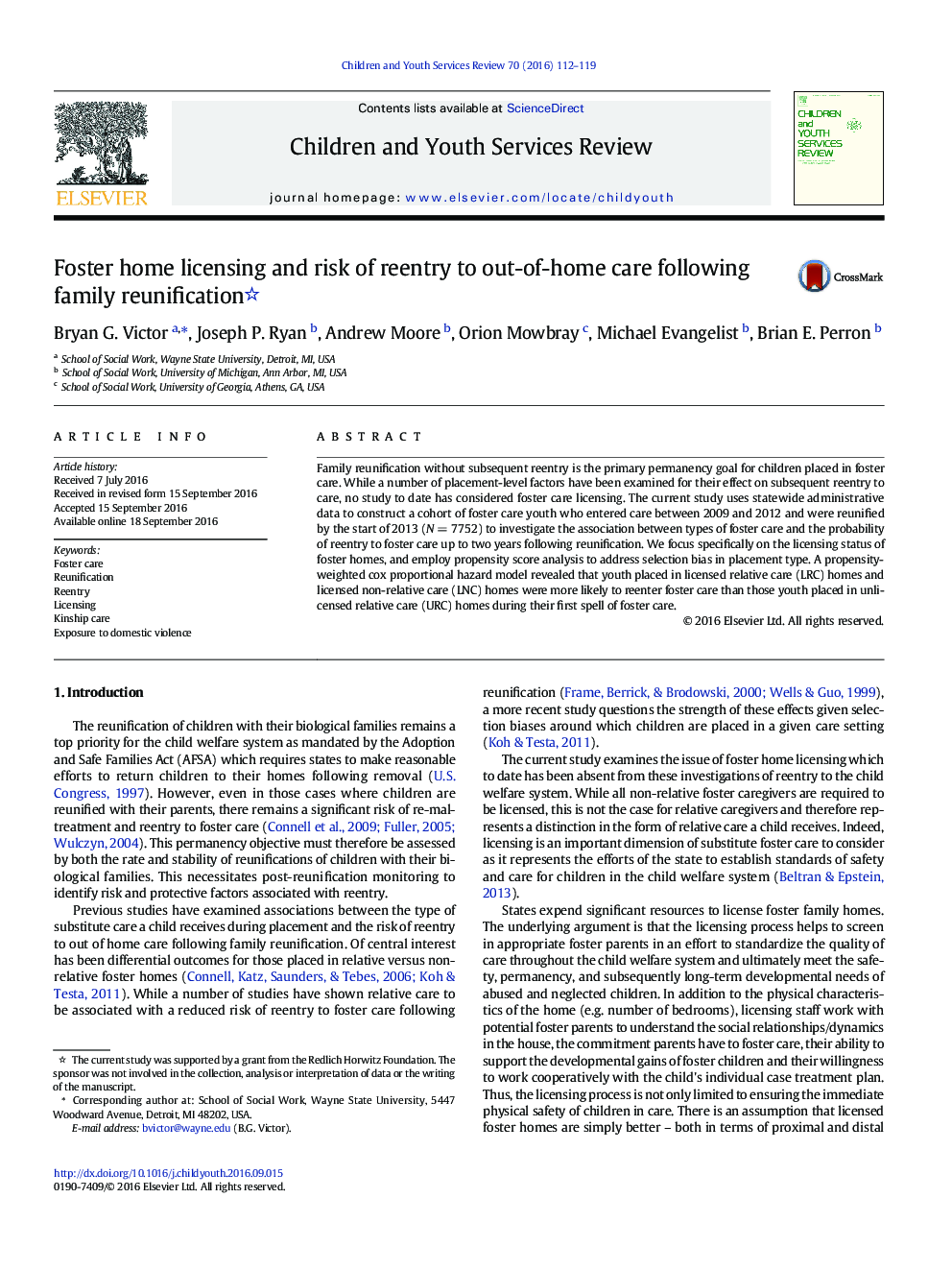| Article ID | Journal | Published Year | Pages | File Type |
|---|---|---|---|---|
| 4936626 | Children and Youth Services Review | 2016 | 8 Pages |
Abstract
Family reunification without subsequent reentry is the primary permanency goal for children placed in foster care. While a number of placement-level factors have been examined for their effect on subsequent reentry to care, no study to date has considered foster care licensing. The current study uses statewide administrative data to construct a cohort of foster care youth who entered care between 2009 and 2012 and were reunified by the start of 2013 (NÂ =Â 7752) to investigate the association between types of foster care and the probability of reentry to foster care up to two years following reunification. We focus specifically on the licensing status of foster homes, and employ propensity score analysis to address selection bias in placement type. A propensity-weighted cox proportional hazard model revealed that youth placed in licensed relative care (LRC) homes and licensed non-relative care (LNC) homes were more likely to reenter foster care than those youth placed in unlicensed relative care (URC) homes during their first spell of foster care.
Related Topics
Health Sciences
Medicine and Dentistry
Perinatology, Pediatrics and Child Health
Authors
Bryan G. Victor, Joseph P. Ryan, Andrew Moore, Orion Mowbray, Michael Evangelist, Brian E. Perron,
